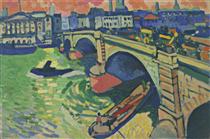
1880 - 1954
André Derain
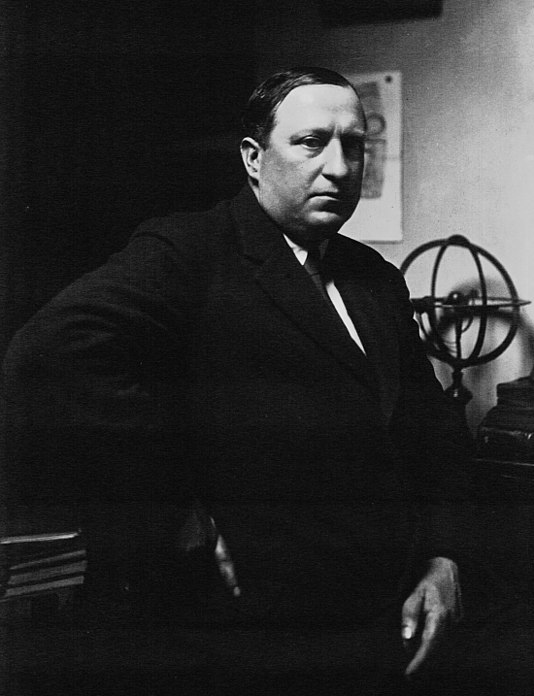
description
André Derain was a French artist, painter, sculptor and co-founder of Fauvism with Henri Matisse. Two other main styles of his work were Cubism and Neo-Classicism.
When Derain was young, he attended painting classes under Eugène Carrière and Académie Julian in Paris. There Derain met Henri Matisse, his future friend and colleague, who persuaded Derain’s parents to allow their son to abandon his engineering career and devote himself solely to painting.
For a few years, André painted landscapes and figure studies in shining colors and used broken brushstrokes and impulsive lines to define his spontaneous compositions. However, in 1908, impressed by the paintings of Post-Impressionist painter Paul Cézanne, he worked for a few years in a stylized form of Cubism. Later on, he created a few Neoclassical works.
Derain was one of the first to collect tribal art from Africa. His interest in primitive masks began after he saw them exhibited at the Negro Museum in London.
The artist’s works attracted attention at the Autumn Salon of 1905 and were almost completely bought by collectors. Despite the great success, the artist did not stop experimenting and constantly looked for new ways of painting. Derain did not confine himself to visual arts; he created scenery for leading theaters and costumes for ballets, and was also a brilliant illustrator. His engravings adorn the editorial houses of Guillaume Alolliner, Max Jacob, Andre Breton and other avant-garde writers.
Key ideas:
– Derain’s paintings are characterized by dense, vibrant brushwork that attracts the viewer’s attention. The artist searched for new forms of expression, experimenting with colors and lines and materials. He subtly felt the nuances of color.
– The artist managed to try almost all modern painting styles. Once Derain was interested in Cubist stylistic elements. However, his stylistic exploration of it was very brief.
– The artist mostly focused on the beauty of what is described on the canvas, regardless of specifics.
– The first Fauvist paintings by Derain are characterized by his inclination to show the tension of life, its natural pace and energy. These paintings are decorative. They are filled with intense tints and are distinguished by the harmonious position of big color spots. Broken lines in landscapes clearly delineate contrasting colors.
– Despite wide recognition, Derain did not stop improving his style. He constantly looked for new ways to develop his creative potential. In 1906, he met Pablo Picasso and became interested in Cubism. The artist painted many landscapes and still lifes in this style. The distinguishing features of the works of this period are strict geometric forms, and the volume and harmony of the images. Colors also became softer.
– The next significant change in the artist’s work occurred after his participation in World War I. Derain replaced the bright colors of Avant-garde with more reserved shades. His paintings became more classical and similar to medieval times. Despite working in the traditions of these genres, Andre Derain managed to express his vivid personality and inimitable talent in his neoclassical paintings.
During the occupation of France, Derain supported the Nazi Party. This gave him a dubious place in the history of arts.
1880
1895
1898
1900
1905
1906
1907
1908
1909
1914
1928
1954
The birth of the artist
Derain began to study
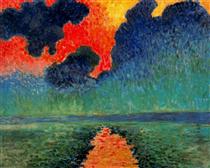
Derain attended painting classes under Eugène Carrière

The artist met Maurice de Vlaminck
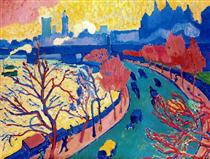
The exhibitions

Meeting Picasso

Art dealer Daniel-Henry Kahnweiler purchased Derain’s entire studio

Crisis of creativity
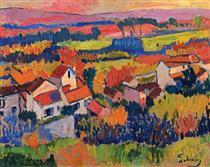
Woodcuts. Primitivism
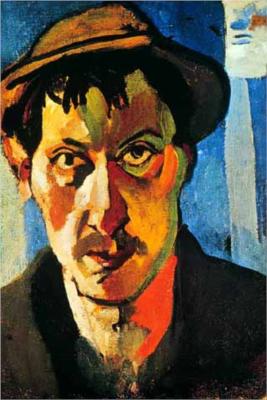
Derain was drafted into military service in World War I

“Still-life with Dead Game”

He was awarded the Carnegie Prize in 1928 for his “Still-life with Dead Game” (the style of this painting is Neoclassicism). After that, he began to exhibit his works extensively abroad: in London, Berlin, Frankfurt, Düsseldorf, New York City, and Cincinnati, Ohio.
The death of the artist

André Derain
On Artist
flow
Post-Impressionism
Cubism
friends
Henri Matisse
Pablo Picasso
Amedeo Modigliani
artists
Eugene Carriere
Vincent van Gogh
Georges Seurat
Oscar-Claude Monet
Paul Cezanne
Georges Rouault
Jean-Auguste Dominique Ingres
Rafael Santi
Antoine Watteau
Nicolas Poussin
Camille Corot
Hubert Robert
Paul Gauguin
By Artist
friends
Henri Matisse
Pablo Picasso
Albert Marquet
Maurice de Vlaminck
Jean Puy
Amedeo Modigliani
artists
Jean Dominic Anthony Metzenzhe
Leo Gestel
Henrik Gottlieb
Mikhail Larionov
Emily Carr
